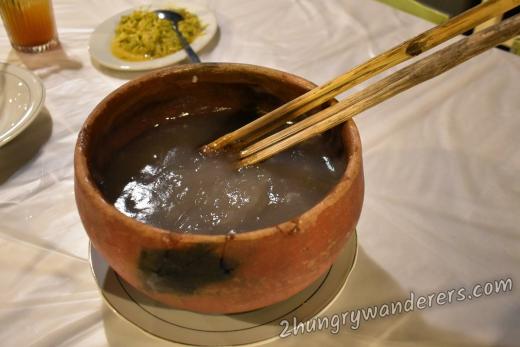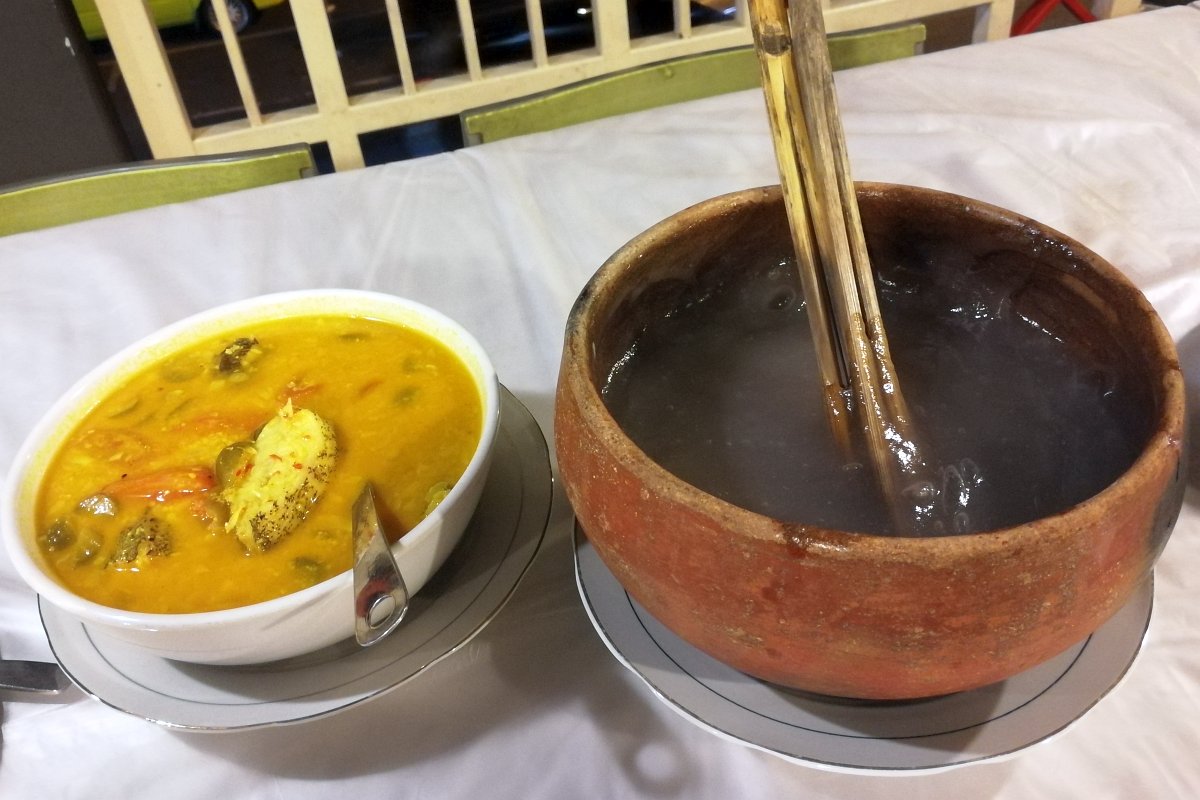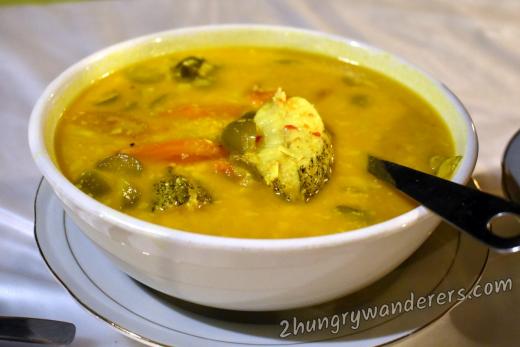
In our many years of travelling, we have tried a large variety of foods - most were delicious new tastes, but some were quite unusual in preparation and ingredients. The papeda is a dish we had in Indonesia and its gooey substance with milky-translucent colour and barely any taste of its own won it a solid place in the list of the weirdest things we have ever eaten. If you ever travel to Amobon Island, it is the perfect place to try this traditional treat from the Moluku region.
The journey of this staple food begins with the sago trees - a type of palms. Sago starch is extracted by processing the soft substance found inside the sago tree trunks. Papeda is then made by boiling the sago starch with water into a sticky mixture.

Traditionally, the starchy paste is served with yellow fish soup and/or grilled fish. The idea is similar to mixing rice with curry - you combine the relatively tasteless papeda with a rich dense flavourful dish to make a complete meal.

I have to admit - we did not know exactly what papeda was when we ordered it for the first time. We had only heard it was a traditional food and was worth trying, hadn't done any research on it and did not expect to be anything too unusual.
We arrived at the restaurant (Cili padi restaurant in Ambon city centre area) and after browsing the menu, ordered papeda and yellow fish soup. We thought we would get a small bowl of whatever papeda was on the side, considering it was not expensive at all. To our surprise, they brought us a giant clay pot - it was probably 5 l in volume, and full of sticky white paste. Later, we noticed a table of six next to us were sharing a single serving of papeda - good thing we did not order two!
Two giant wooden chopsticks were jabbed in the dense mass to be used for serving. "OK", we thought, "How hard could this be, just take a portion and put it in your plate". Have you tried eating gelatin pudding or jello with chopsticks? The slippery slimy stuff just slid off and it seemed like getting any of it out of the pot was an impossible task.
At this moment, we knew we would not be able to figure it out on our own, we looked around but the waitress had disappeared in the kitchen. No worries, we had internet on the phone, so we opened YouTube and searched for videos explaining how to eat papeda. There were a couple of helpful videos on the topic and armed with the newly gained knowledge we were able to start dinner.

After a bit of arguing "You do it" - "No, you do it", we decided to take turns and aside from some fumbling with the gigantic chopsticks, we managed to successfully serve us some papeda. The trick is to quickly wrap the sticky porridge around the wooden sticks, then plop about a cup-sized chunk of it in your plate. Then you pour some spicy soup on top of it and you get a slime island in the middle of tasty soup on your plate. You take a spoon, and mix a bite of papeda with the full of flavour soup and transport it to your mouth - it is very slippery and you must be careful or it will just slid off your spoon. You can use your fork with this task - spoon in right hand, fork in the left, the South-Asian way. On one of the videos we watched, the guy just grabbed his plate and sucked some of the mixture directly off of it, which also seemed like a good way to do it.
The papeda itself had no discernable taste, but surprisingly, its slimy texture combined very well with the warm spicy soup and the result was a very delightful and memorable meal. And once we got the hang of handling the starchy porridge, it was not that difficult to consume. We could not finish the giant bowl of papeda, but enjoyed dinner and the experience was well worth it .

Comments